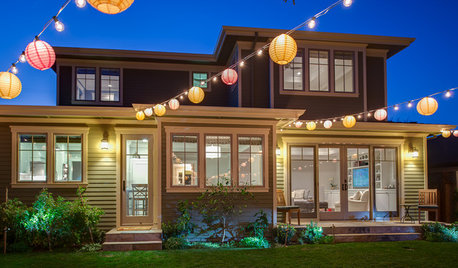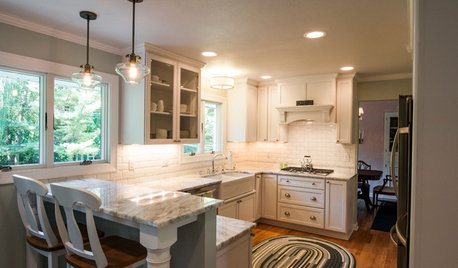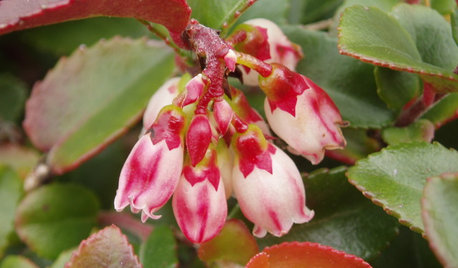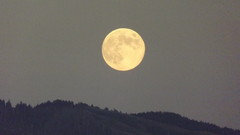What's the height of your yearly rainfall?
nikthegreek
8 years ago
last modified: 8 years ago
Featured Answer
Sort by:Oldest
Comments (45)
Sheila z8a Rogue Valley OR
8 years agoozmelodye
8 years agoRelated Discussions
Yearly plan for St. Augustine
Comments (3)google growing st. augustine grass north florida. go to uf website. tons of info. has fertilizer schedules for low medium and high maitenance lawns. it is all about numbers. applying the right thing is knowing basic math. 3-4 pounds of nitrogen a year. you need to find out how many square feet of sod you have. research herbicides for st. augustine grass online. buy professional product. celsius is a good one you can apply in hot and cold weather. follow directions to a t. you need to apply a pre emergent in a few weeks. find a lesco or john deere landscapes near you and ask them what is being put out in your area and how. remember, calibrate your equipment, buy quality equipment, its all about weight of product to your sod square foot. and remember a little more is not better....See MoreBecause of the limited rainfall
Comments (26)I've been reading the High Country Gardens e-zine Xeriscape Gardening for four years. It is a good read and eyeopening. It's a free signup and they don't send it too often. For near total drought, look to the species roses. My species garden sits on a clay knoll with no irrigation. Parts are so dry that grass won't grow. The roses there survive (including one of my found boursalts). Two plants to look to are Sedums and Alliums. One of my more miserable summers, garlic chives were a riot of blooms. They fill spaces, but are easily controlled. Sedums don't seem to need water. Native plants continue to surprise me. I thought my sweet autumn clematis was dead to drought. It came back, it was just taking a year off. And I do use grey water on roses; when we replumbed the house, the grey water diversion was designed (by us) into the system. Grey water works well on roses on manetti and multiflora rootstocks. No guarantees with roses on Dr. Huey....See MoreWhat is your favorite clumping grass?
Comments (12)Well, if I'm honest with myself, it's not so much a wet bed (no, it is not near a pond or any water source) as it is poor drainage. Over the years since this house was build, the beds and land around it have sort of sunk, and the sidewalk has as well. But in a drought, this bed is not going to be wet (unless I water it). but when it gets water, it stays wet for a long time under the surface. Last year I was considering putting a rose in there, but I dug a hole and filled it with water...it had not drained 2 days later. Before it could fully drain, it rained. Then a week later it rained again...it looked terrible having a big water-filled hole so I finally filled it back in, never able to see it actually drain completely. Since then the bed has remained unplanted, except for the old Reeve's spireas planted treacherously close to the house (touching it) at the back of the bed. Last night it occured to me, those spireas are probably the termite's ticket into my house. *sigh* And so, over 1 year after moving into this house, I still have an embarrassingly ugly bed because I am frozen with indecision due to the problems there. That's why I was thinking about sticking some medium heigh grasses right there in the front, then maybe putting a row of stepping stoned behind them, so I can get back to the spireas and prune as needed (they need their post-flowering trim now)....See MorePictures after a rainfall and changes
Comments (14)zkathy ...thanks for looking. I'm glad you like my arrangements. I like yours too. Christine, I guess I should have explained things better - most of the weeds were in my sunny beds inside and outside the pool area. I spent two days weeding them. There are several weeds which self seed too readily if you don't get at them in time. I was getting frustrated because they were keeping me from what I really wanted to do in my hosta beds... move my OP hosta seedlings around and remove some reversions....See Moreozmelodye
8 years agocarriehelene
8 years agomustbnuts zone 9 sunset 9
8 years agoBrittie - La Porte, TX 9a
8 years agoLynn-in-TX-Z8b- Austin Area/Hill Country
8 years agolast modified: 8 years agomariannese
8 years agoBuford_NE_GA_7A
8 years agojacqueline9CA
8 years agoMelissa Northern Italy zone 8
8 years agoUser
8 years agonoseometer...(7A, SZ10, Albuquerque)
8 years agoRosefolly
8 years agolast modified: 8 years agotoolbelt68
8 years agonikthegreek
8 years agowirosarian_z4b_WI
8 years agoingrid_vc so. CA zone 9
8 years agonanadollZ7 SWIdaho
8 years agostillanntn6b
8 years agoBuford_NE_GA_7A
8 years agonanadollZ7 SWIdaho
8 years agofduk_gw UK zone 3 (US zone 8)
8 years agoBuford_NE_GA_7A
8 years agoNinkasi
8 years agotitian1 10b Sydney
8 years agonikthegreek
8 years agolast modified: 8 years agoMelissa Northern Italy zone 8
8 years agonanadollZ7 SWIdaho
8 years agonikthegreek
8 years agolast modified: 8 years agosummersrhythm_z6a
8 years agodaisyincrete Z10? 905feet/275 metres
8 years agocatspa_NoCA_Z9_Sunset14
8 years agolast modified: 8 years agoVicissitudezz
8 years agoKen (N.E.GA.mts) 7a/b
8 years agofduk_gw UK zone 3 (US zone 8)
8 years agoBuford_NE_GA_7A
8 years agoozmelodye
8 years agosummersrhythm_z6a
8 years agolast modified: 8 years agoAnne Zone 7a Northern CA
8 years agolast modified: 8 years agonanadollZ7 SWIdaho
8 years agonippstress - zone 5 Nebraska
8 years agoMelissa Northern Italy zone 8
8 years agolori_elf z6b MD
8 years ago
Related Stories

KITCHEN DESIGNGet Ideas From This Year’s Top 20 Kitchen Tours
Smart storage, functionality for cooks and families, vintage touches and lots of personality mark your favorites of 2015
Full Story
BASEMENTSRoom of the Day: Swank Basement Redo for a 100-Year-Old Row House
A downtown Knoxville basement goes from low-ceilinged cave to welcoming guest retreat
Full Story
HOLIDAYSSimple Pleasures: Welcoming the New Year
Got the champagne and party hats but stumped about what to do next? Try these festive entertaining ideas to ring in the new year
Full Story
COLORHow to Use Marsala, Pantone’s 2015 Color of the Year
Pantone digs deep and goes earthy with its selection. Here are ways to make it work in your home
Full Story
LIFE11 Easy Ways to Keep Your New Year’s Resolutions
Work smarter, not harder, to reach your goals — success is more about taking the right approach than about slogging your way there
Full Story
KITCHEN DESIGNNew Year's Resolutions for Your Kitchen and You
11 ways your kitchen can help you meet your goals for the coming year
Full Story
NATIVE PLANTS5 Ways to Keep Your Native Plant Garden Looking Good All Year
It’s all about planning ahead, using sustainable practices and accepting plants as living organisms
Full Story
THE HARDWORKING HOME8 Laundry Room Ideas to Watch For This Year
The Hardworking Home: A look at the most popular laundry photos in 2014 hints that dog beds, drying racks and stackable units will be key
Full Story
KITCHEN OF THE WEEKKitchen of the Week: 27 Years in the Making for New Everything
A smarter floor plan and updated finishes help create an efficient and stylish kitchen for a couple with grown children
Full Story
GARDENING GUIDESGreat Design Plant: Evergreen Huckleberry Appeals All Year
Spring flowers and summer berries are only half the story with Vaccinium ovatum, a versatile Pacific Northwest native plant
Full Story








Lavender Lass